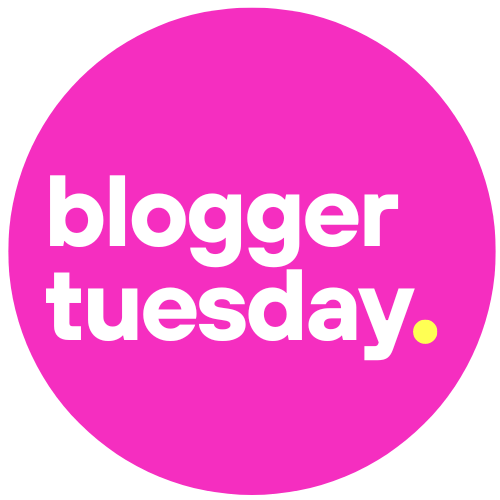There’s no avoiding it—if you want to be a blogger, you have to get comfortable interacting with brands. It’s one of the main ways bloggers make money, whether through affiliate programmes or sponsored posts. But when you’re a new blogger, just getting a foot in the door can seem impossible. Where do you even start? You’re setting out with no contacts and maybe only a vague idea of what types of brands you want to work with. It’s easy to get yourself into a tizzy trying to work out what you’re meant to be doing.
But don’t give up at the first hurdle. Connecting and collaborating with brands can actually be easier than you think. There are lots of ways you can start reaching out to relevant brands and make the right connections.
Image from Pexels – CC0 Licence
Think About the Right Brands for Your Blog
You want to start connecting with brands, and you’re raring to go. But don’t get too ahead of yourself. Before you do anything, a good think about what types of brands are right for your blog is a must. Your blog needs to keep a focus on your audience and the topics you’ve chosen to write about. You don’t want to go off-piste right away or let your readers down by advertising anything and everything.
Spending a little time defining which brands work for your blog will pay off later. It makes it easier to sift through opportunities and keep the integrity of your blog. But you obviously have to balance being choosy and passing on the right number of opportunities. You can’t narrow down who you’re willing to work with so much that you’re not actually bringing in much money.
So think carefully about what types of brands match your blog. Depending on your blog, there could be a broad range or more of a niche set of brands with a more specific audience. Essentially, matching your audience to theirs is what matters.
How Can You Start Reaching Out to Brands?
If you want to start making connections with brands, you have to be proactive about it. It’s nice to fantasise about big brands approaching you because you’re such an amazing blogger, but it’s unlikely to happen. At least, not until your blog has actually become really successful.
Reaching out to brands can be a bit intimidating at first. There are a few different methods you can use, and you might not know where to start. But once you start learning the ropes, it will start to seem old hat.
Joining Blog Affiliate Programmes
Affiliate programmes are by far one of the most popular ways to start working with brands. There’s a huge range of options, although some of them have stricter requirements than others. They can be a good way to get consistent opportunities to earn money through brand collaborations.
Firstly, what exactly is an affiliate programme? Essentially, it’s where you promote a brand’s products or services and you get a commission for the sales made that result from your promotion. This often takes the form of you sharing a unique link and a cookie placed on the customer’s device, which allows the brand to track which sales came from you. One of the biggest examples of an affiliate programme is Amazon’s, which you’ll notice a huge number of bloggers are members of. But there are smaller programmes too if you want to be more selective about the brands you work with.
Image from Pexels – CC0 Licence
Different affiliate programmes have different requirements for joining them. These usually include things like the amount of traffic your blog receives, your domain authority, and (to remain in the programme) how many clicks or sales your links generate.
Here are some of the top examples of popular affiliate programmes and their requirements:
- Amazon Associates – Amazon is an obvious pick for a lot of blogs thanks to its popularity and huge range of products. Anyone can sign up and there’s no minimum sales you have to meet to stay in the programme, but they might reject websites that involve certain topics.
- eBay Partner Network – They might not be as big as Amazon, but eBay is still an ecommerce giant. You can quickly apply online, with different affiliate models and no strict requirements.
- Shopify – Unlike Amazon and eBay, the Shopify affiliate programme is to sell Shopify itself, not the B2C products that users sell. This makes it a good choice if you run a blog on technology, business or a similar area. You’ll need an active website with an established audience, and Shopify works with course creators, influencers and more, giving a flat-rate $150 per sale.
- Etsy – Etsy offers an ecommerce platform for creative products, ranging from clothing to artwork. Their affiliate programme could be great for your lifestyle, fashion or craft blog, among other things. Etsy’s affiliate programme is operated through Awin, which is also in charge of a range of other affiliate programmes. Most websites are eligible, with some exceptions.
- Awin – Speaking of Awin, they can be really useful for finding other affiliate opportunities. They work with many different brands, from big to small, so you can find smaller brands that match your blog. Their brands cover finance and insurance, retail and shopping, telecommunications, and travel. You’ll find different requirements for each brand’s affiliate programme.
Using Email and Social to Contact Small Businesses
Affiliate programmes aren’t your only options. You can also reach out to brands directly, especially with email and socials. But you have to tread carefully if you want to get it right because approaching brands in this way can be tricky to get right.
To start with, consider writing an email (or a DM) to use as a template. Include important details like who you are, what your blog is about, and information like how much traffic you get or other important stats about your blog. But remember that this is just a template, and you should adjust it when contacting each brand.
Make sure you find the right details for the brand you’re interested in. Look for the right email address or social handle, ideally for the person who handles blogger partnerships. It will show you’ve done your research and get you in touch with the best person to help you. You can also customise your message by suggesting ways you could work together.
Image from Pexels – CC0 Licence
About Ad/Gifted Campaigns
Campaigns where you directly advertise a product or service from a brand often involve receiving something for free. You get a free item or maybe get to try something for free, and you review or promote them in return. This is a way brands might work with you directly, but you should definitely be careful about what you should accept.
Accepting gifts in return for promotion can be a good idea when you’re just starting out. It can help to show that you’re capable of collaborating with brands. But if you’re not also getting paid for it, you might eventually feel you’re not actually getting a lot from it. Free stuff is nice, but it doesn’t get you money unless you can sell it on. So it’s important to choose these campaigns carefully and consider when they’re worth it.
How Do You Spot a Scam?
When you’re a blogger who’s just starting out, there’s something you need to be really careful of: scams. It’s easier than you might think to get scammed, especially because some scams are so convincing. So how do you spot one and how do you tell if an offer is genuine?
Here are some top signs to look for:
- Poor spelling and grammar – If you read a message with poor spelling and grammar, it’s a potential sign that it’s not from a legitimate brand.
- Dodgy links – Be careful about clicking on links. One popular scam is a fake Instagram link designed to hack your account.
- Asking you to buy something – You shouldn’t have to buy anything. If a brand wants a review, they should be providing you with a freebie.
- Unrecognisable brands – Some brands are small and just starting out. But if you can’t find any good information about them, it could be a bad sign. For UK businesses, check Companies House to see if they exist.
Deciding If an Offer Is Right for You
It’s great to be offered an opportunity to work with a brand. But don’t get too excited before you’ve really thought about it. It might be an interesting opportunity, but it’s not always right for you. One of the most important things to think about is whether the deliverables and timeline make sense for you. Is it actually something you’ll be able to do on time, and is the compensation suitable? You don’t want it to cause you a lot of stress and you need to make sure you’re fairly compensated.
If you’re not sure, it’s okay to turn it down. Other opportunities will come along, so it’s completely fair to be picky about what you accept. Even if you’re just starting out, you don’t have to accept anything and everything that’s offered to you.
Finding brands to collaborate with might seem like a minefield, but there are lots of methods you can use to get started and find the right partnerships.


